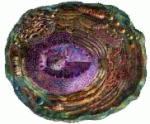Cell Biology
|
19 july 2015 01:32:34 |
| Key pathways regulated by HoxA9,10,11/HoxD9,10,11 during limb development (BMC Developmental Biology) |
|
Tweet Background:
The 39 mammalian Hox genes show problematic patterns of functional overlap. In order to more fully define the developmental roles of Hox genes it is necessary to remove multiple combinations of paralogous and flanking genes. In addition, the downstream molecular pathways regulated by Hox genes during limb development remain incompletely delineated.
Results:
In this report we examine limb development in mice with frameshift mutations in six Hox genes, Hoxa9,10,11 and Hoxd9,10,11. The mice were made with a novel recombineering method that allows the simultaneous targeting of frameshift mutations into multiple flanking genes. The Hoxa9,10,11 −/−
/Hoxd9,10,11 −/−
mutant mice show a reduced ulna and radius that is more severe than seen in Hoxa11
−/−
/Hoxd11
−/−
mice, indicating a minor role for the flanking Hox9,10 genes in zeugopod development, as well as their primary function in stylopod development. The mutant mice also show severe reduction of Shh expression in the zone of polarizing activity, and decreased Fgf8 expression in the apical ectodermal ridge, thereby better defining the roles of these specific Hox genes in the regulation of critical signaling centers during limb development. Importantly, we also used laser capture microdissection coupled with RNA-Seq to characterize the gene expression programs in wild type and mutant limbs. Resting, proliferative and hypertrophic compartments of E15.5 forelimb zeugopods were examined. The results provide an RNA-Seq characterization of the progression of gene expression patterns during normal endochondral bone formation. In addition of the Hox mutants showed strongly altered expression of Pknox2, Zfp467, Gdf5, Bmpr1b, Dkk3, Igf1, Hand2, Shox2, Runx3, Bmp7 and Lef1, all of which have been previously shown to play important roles in bone formation.
Conclusions:
The recombineering based frameshift mutation of the six flanking and paralogous Hoxa9,10,11 and Hoxd9,10,11 genes provides a resource for the analysis of their overlapping functions. Analysis of the Hoxa9,10,11 −/− /Hoxd9,10,11
−/−
mutant limbs confirms and extends the results of previous studies using mice with Hox mutations in single paralogous groups or with entire Hox cluster deletions. The RNA-Seq analysis of specific compartments of the normal and mutant limbs defines the multiple key perturbed pathways downstream of these Hox genes. |
| 175 viewsCategory: Biology, Cell Biology |
 FOXL2 modulates cartilage, skeletal development and IGF1-dependent growth in mice (BMC Developmental Biology) FOXL2 modulates cartilage, skeletal development and IGF1-dependent growth in mice (BMC Developmental Biology)Monitoring brain development of chick embryos in vivo using 3.0 T MRI: subdivision volume change and preliminary structural quantification using DTI (BMC Developmental Biology) 
|
| blog comments powered by Disqus |
MyJournals.org
The latest issues of all your favorite science journals on one page
The latest issues of all your favorite science journals on one page



